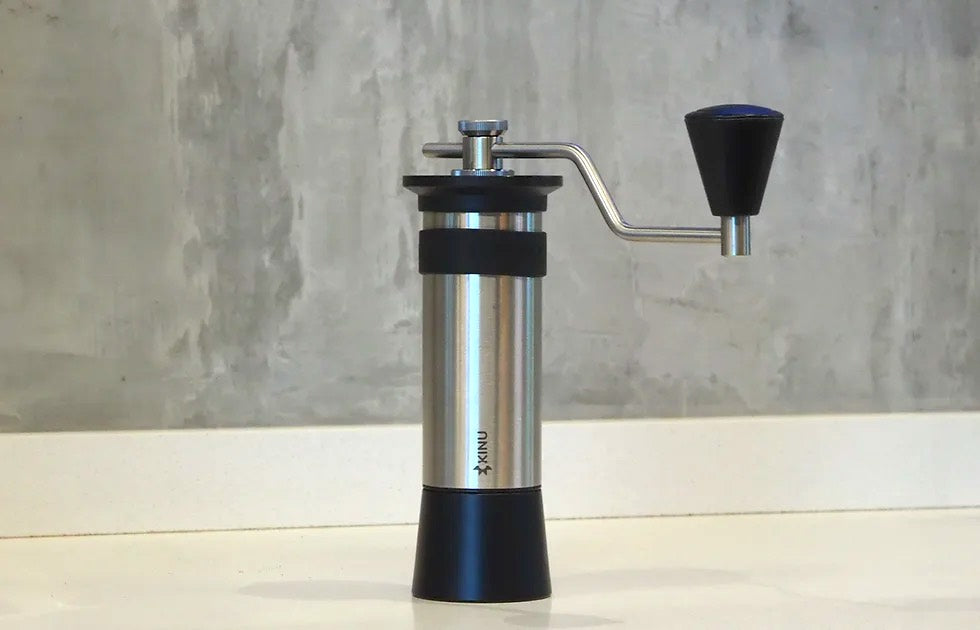From a humble beginning as a suggestion in coffee forums, the WDT tool, or Weiss Distribution Technique, has now cemented its place in standard espresso brewing. Especially valuable for espresso newcomers or those finding it tough to achieve the perfect shot, a WDT tool could be your espresso savior. It's a simple concept that's easy to incorporate into your coffee-making routine.
In this blog post, we'll delve into the particulars of a WDT tool, its function, its advantages, and how it can enhance the quality of your espresso. We'll also take you on a little journey through modern espresso history! So, if you're set on broadening your knowledge about WDT tools, do read on.
A WDT Tool?
Emerging initially from discussions in online coffee forums, the WDT tool, ingeniously designed to assist in the even distribution of coffee grounds in an espresso basket. The tool is essentially a convenient needle holder.
In the span of the last two years, this tool has captivated the international barista community, earning its place in numerous World Barista Championship routines and introducing a new level of precision, applied prior to the tamping process.
The goal of WDT Tool
The WDT tool contributes to your coffee brewing process in two key ways. First, it breaks up clumps in the grounds. Second, it promotes an even distribution of those grounds.
Breaking the clumps
Clumps in your grounds can act as small channels, leading to localized over-extraction and thus creating bitterness in your espresso shot. By effectively breaking these clumps, the WDT tool ensures a smoother, more balanced extraction.
Even distribution
An uneven distribution of grounds can create areas of different densities in the coffee puck, causing water to channel through less dense areas and resulting in an inconsistent extraction. By aiding in an even spread of coffee grounds, the WDT tool ensures that water passes through all the coffee at the same rate, allowing for a uniform extraction that brings out a full range of balanced flavors in your espresso shot.
Invention of The Weiss Distribution Technique
The Weiss Distribution Technique goes all the way back to December 2005 when John Weiss talked about it on the Home-Barista coffee forum. His invention came by because of the lack of consistency in home espresso grinders and their problems with clumping.
“So one day I tried stirring the grounds around with a needle to break up clumps and even the distribution. I know it sounds odd, but it makes perfect sense to me. Not only does stirring declump the grounds, but the needle evens the distribution vertically, all the way down to the bottom of the basket. I simply cannot get this effect with my fingers.” he said in the forum.
The popular concern back then in coffee making was surface distribution. Yet, John Weiss attributed the issue of poor extraction largely to clumps in the coffee grounds. The adoption of his proposed solution, the WDT, was gradual. Nevertheless, a number of espresso enthusiasts understood its potential and steadfastly employed the technique.

The Evolution of Our WDT Tool
3D printed model
At Café Fabrique, we've seen the WDT tool evolve from a 3D-printed idea to a must-have gadget. Our first model had 0.4mm acupuncture needles and an adjustable design, it became the preferred choice for thousands of coffee lovers globally.
Making it in aluminium
Driven by our aspiration to enhance durability and visual appeal, we transitioned our WDT tool to an aluminum construction. This major milestone perfectly fuses function and form, retaining its adaptable design, adopting 0.35mm dull needles, and adding a magnetic stand.
The Homemade
Initially, homemade items laid the foundation for WDT tools. A cost-effective base, such as a wine bottle cork, was used, into which evenly spaced needles were inserted. Although a single needle is an option, it doesn't promise comfort in use.
Rotating WDTs
Recently new models have been popping up. Notably the Moonraker from Weber Workshops. These tools are very convenient as they don't require a funnel and are fast to use. Although they don't offer more performance and are very expensive.

How To Use a WDT Tool
The WDT tool is easy to use, the only thing to be careful of is not making a mess. I suggest using a funnel to prevents coffee grounds from spilling.
To Use the WDT tool, begin at the portafilter's very edge, sweeping in a circular motion around the basket's interior until a full circle has been accomplished, ensuring the depth is proximate to the basket's base. Draw your process to a close by performing smaller circles within the central area. The resultant texture of the grounds should be fluffy and even in distribution. You can compact the grounds by gently knocking the portafilter downwards against the countertop, followed by tamping, and subsequently, brewing.
Does WDT Make a Difference Espresso?
Yes, the Weiss Distribution Technique (WDT) positively impacts espresso quality by enhancing the extraction yield (EY%). By breaking up clumps and ensuring uniform distribution of coffee grounds in the portafilter, WDT minimizes channeling, boosts consistency, and optimizes flavor, leading to a higher extraction yield.
Conclusion
In the current coffee scene, WDT is almost a staple in puck prep. Even with solid puck prep and a high-end, clump-free grinder, I maintain that bypassing WDT isn't an option. Raking through a bed of finely ground coffee provides a calming sensation. Given their reasonable price, I suggest that every modern coffee enthusiast should have a WDT tool on hand.












Comments
There are no comments.
Your comment